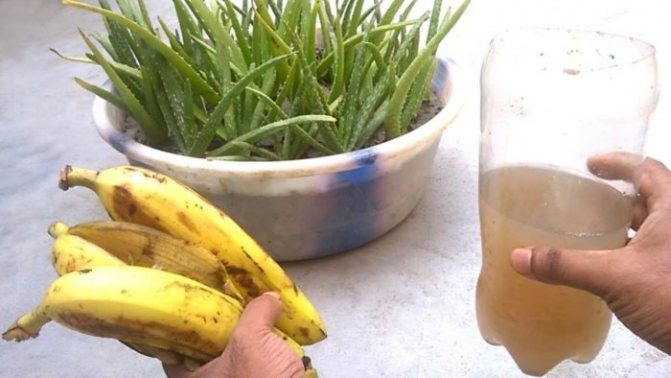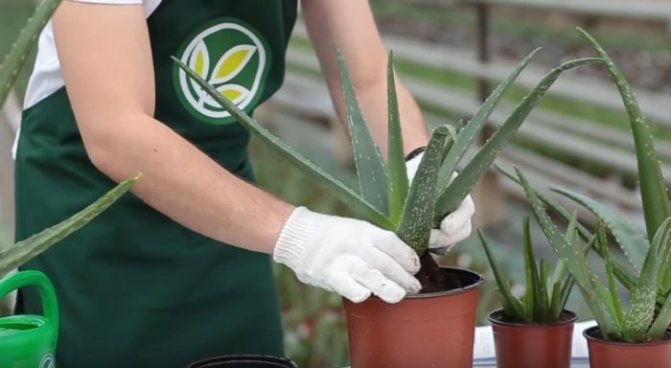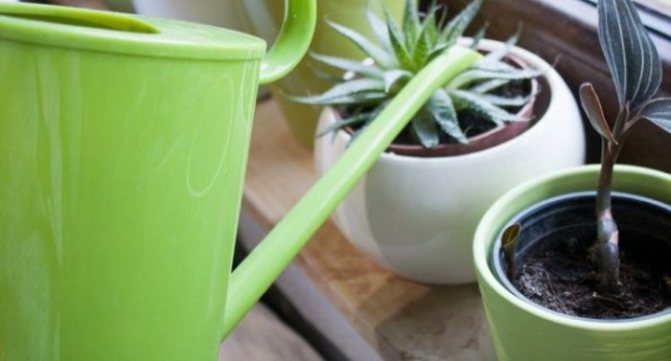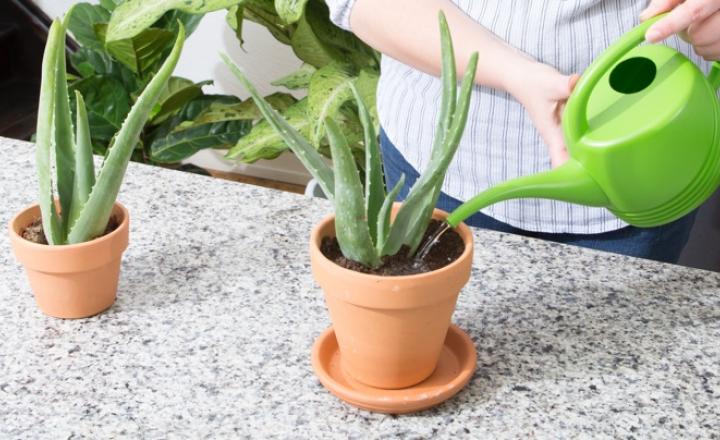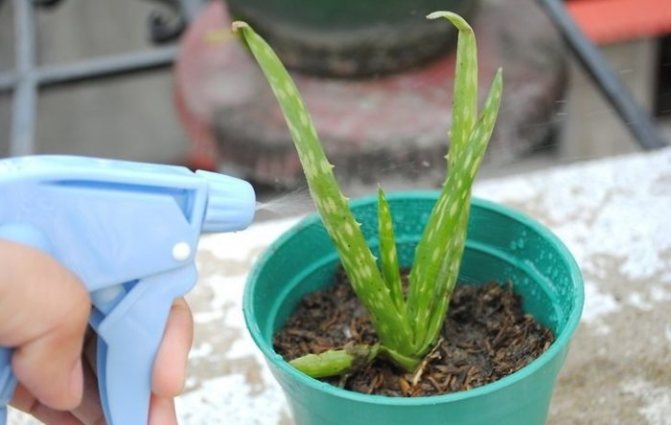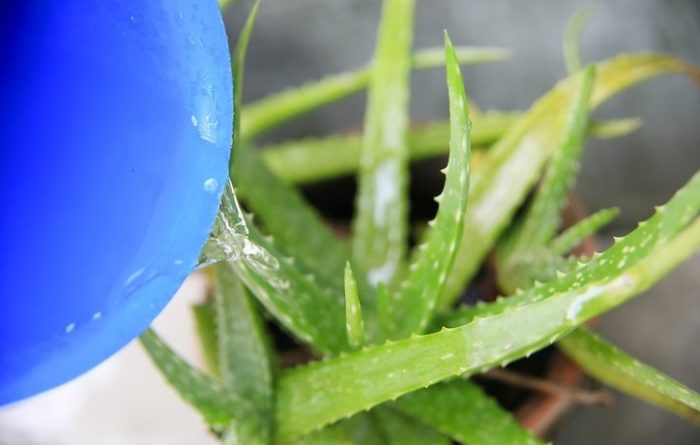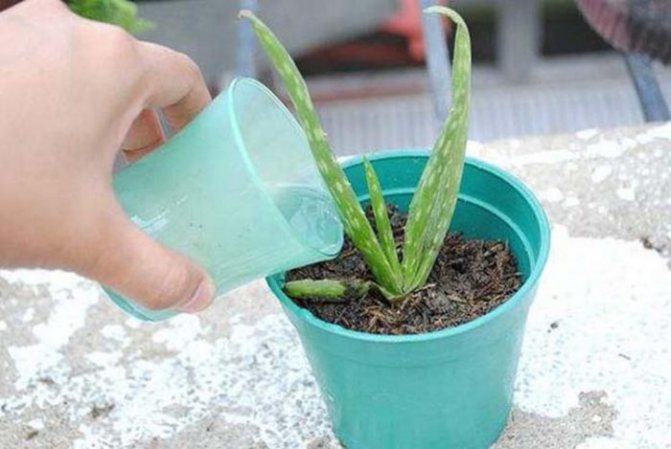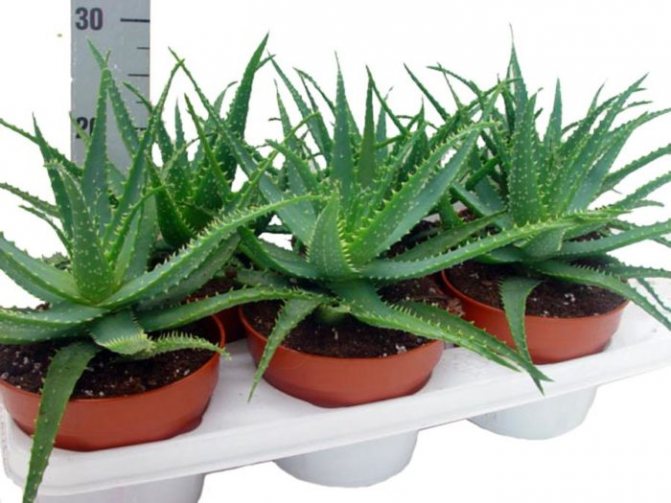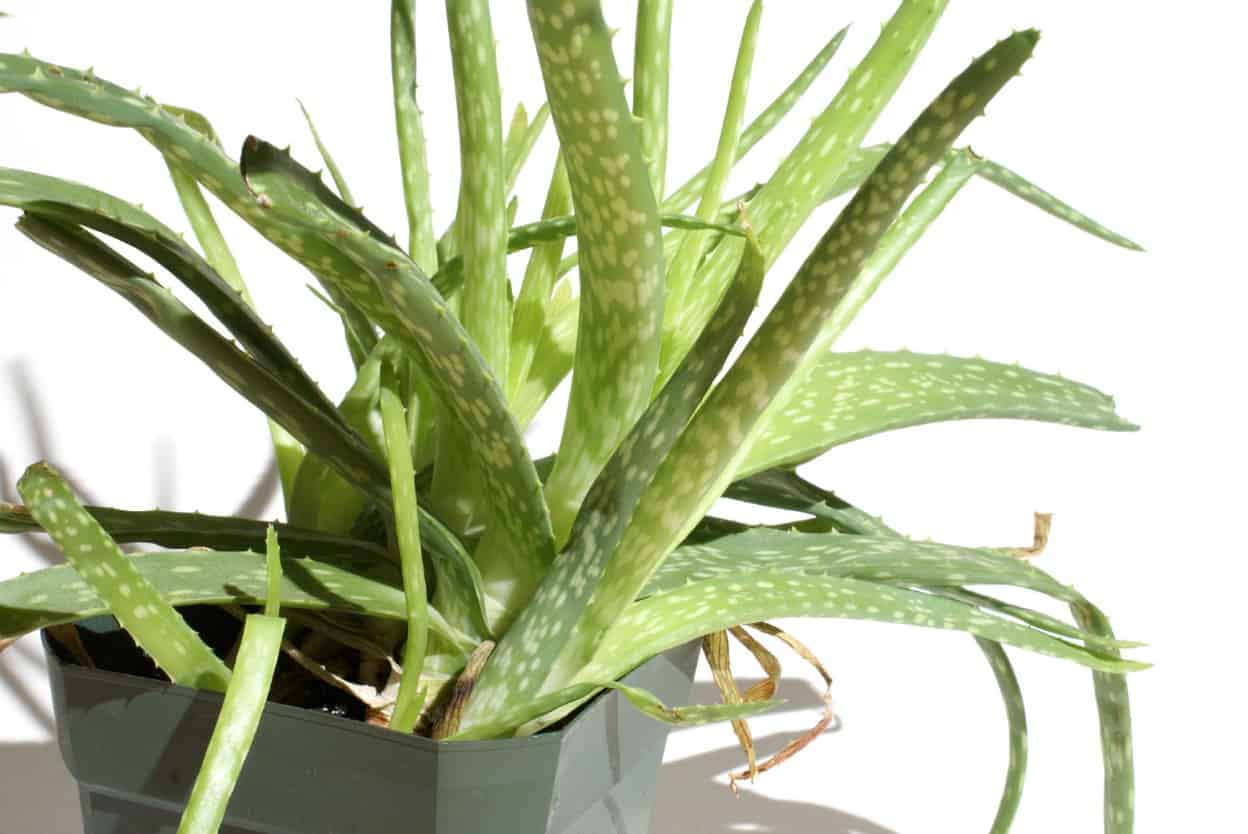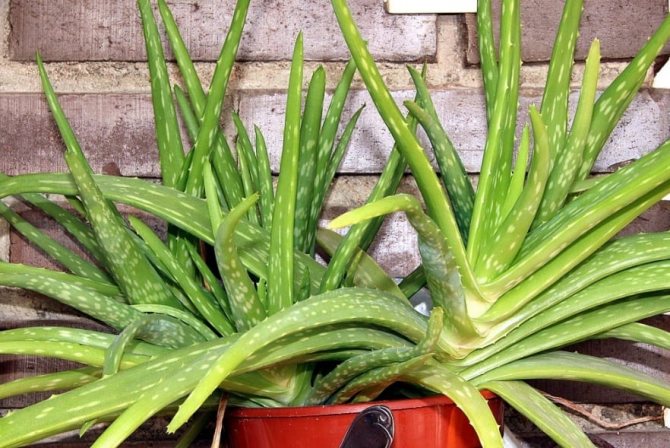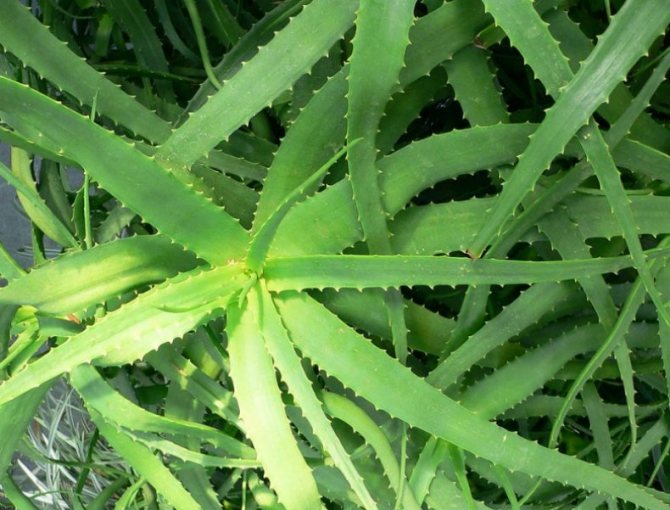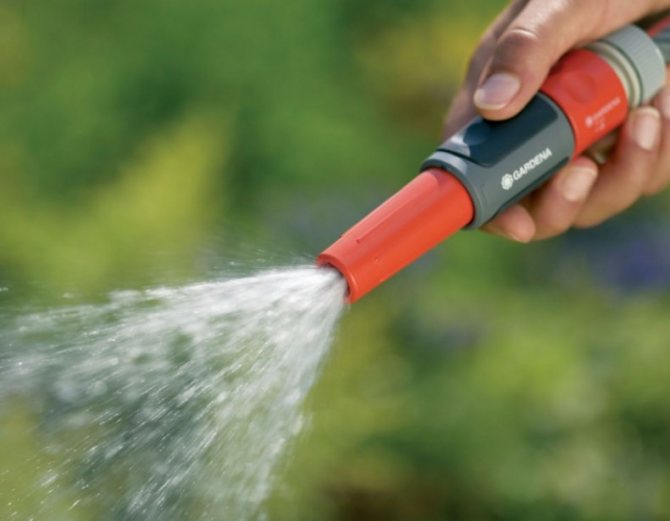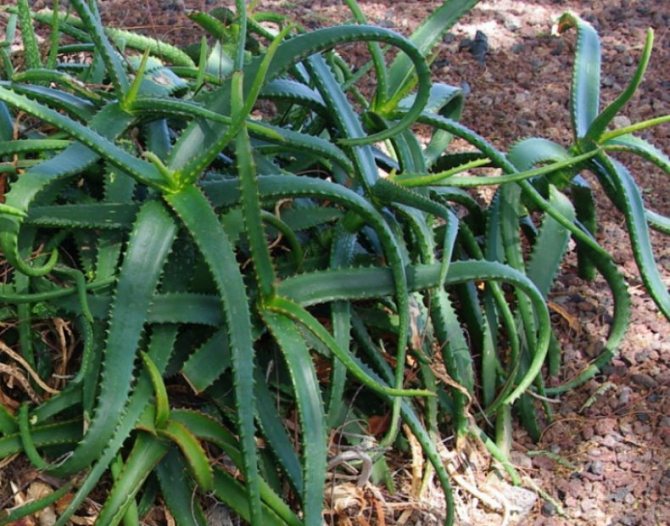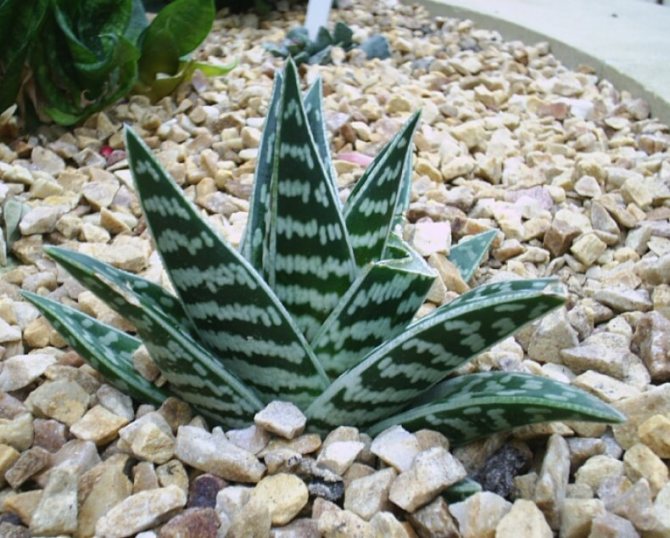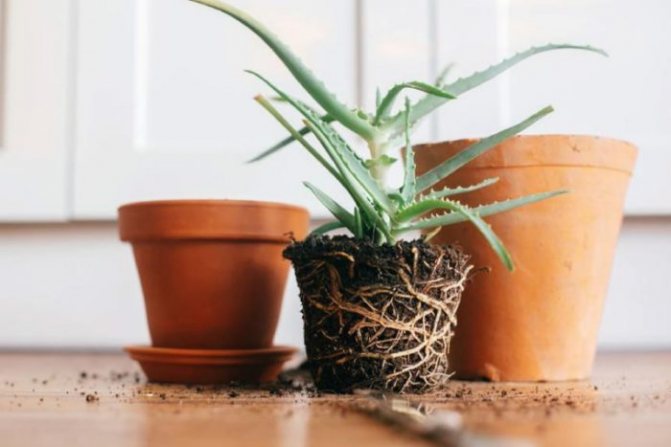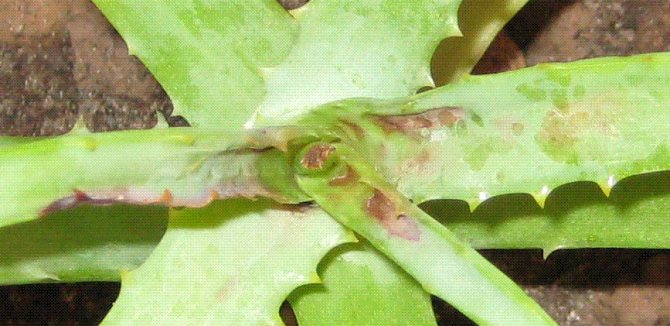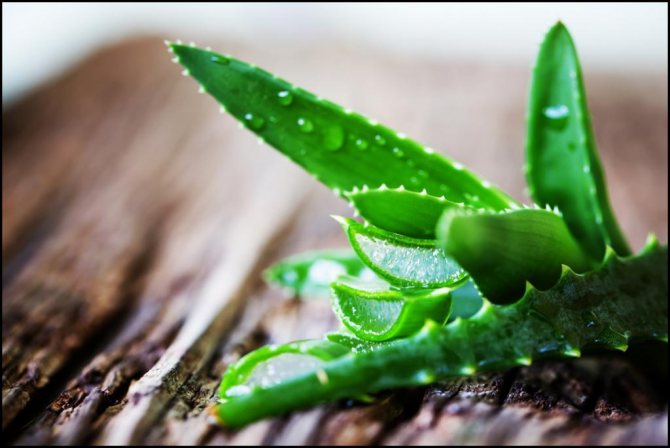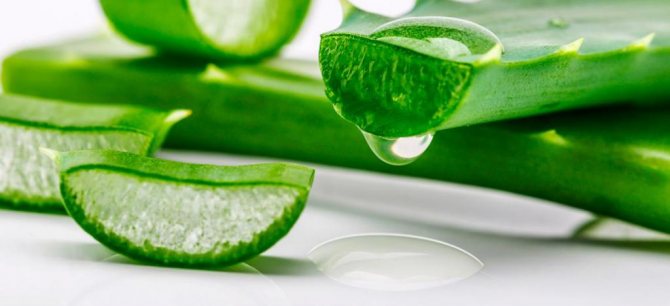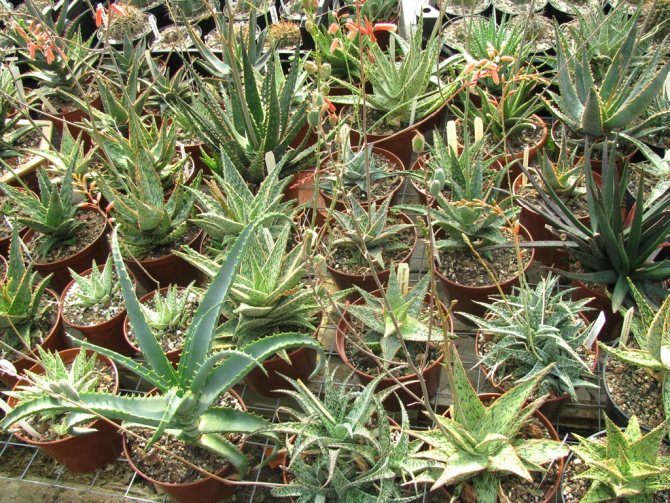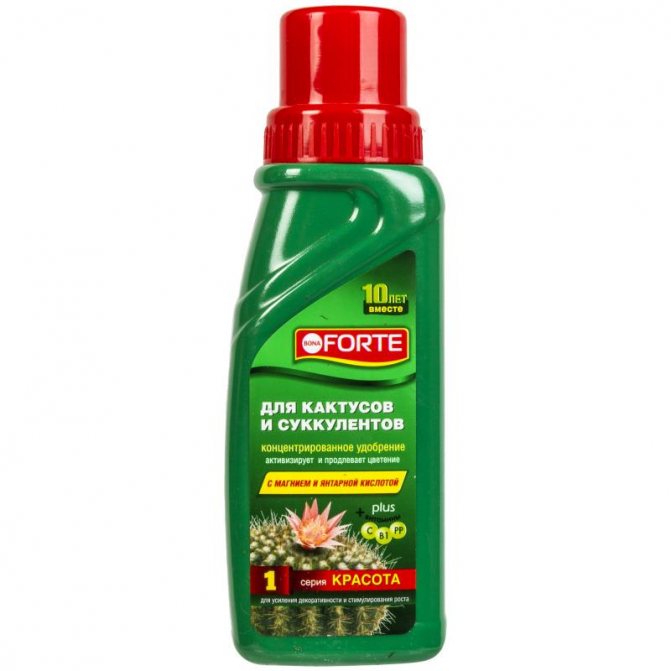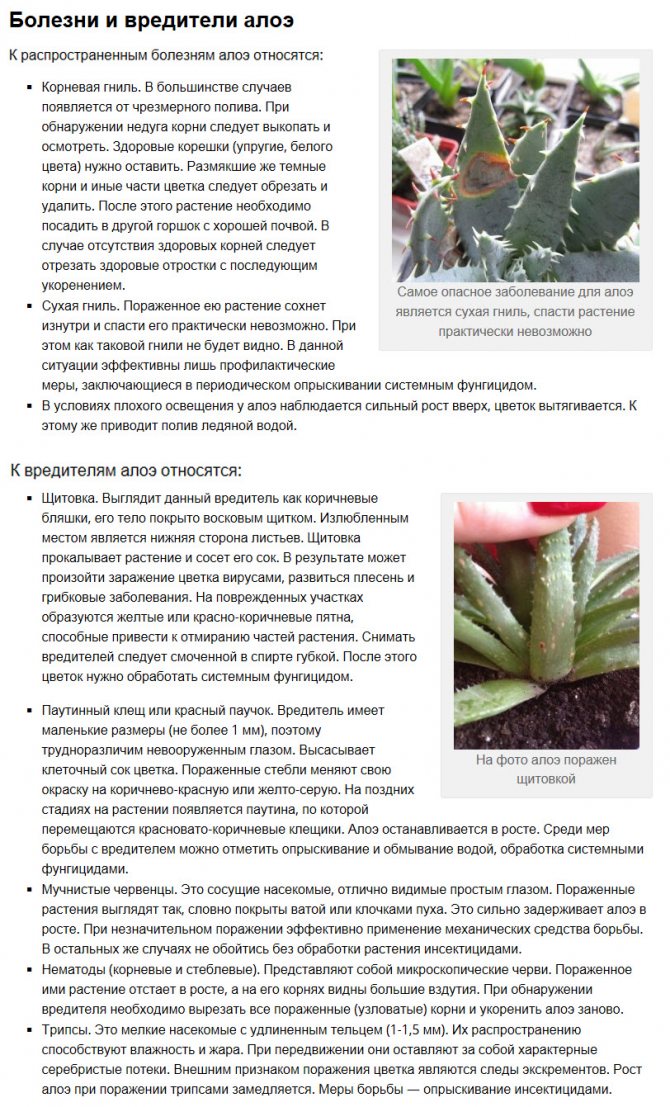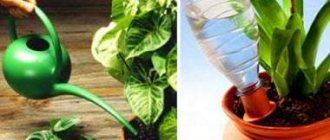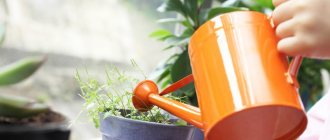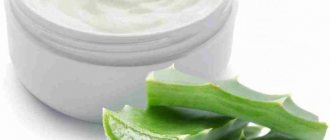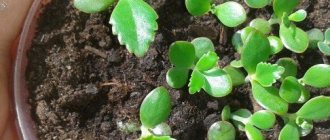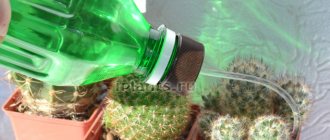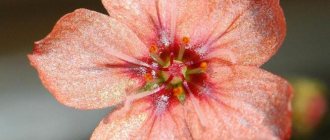Just 15-20 years ago, aloe could be found in every home. Today, unfortunately, this plant is a rare guest on our windowsills. Although it would be worth every family to grow an agave at home, since it is an excellent medicine and cosmetic product. Moreover, if you know the rules for caring for this plant at home, then the cultivation of aloe will not cause difficulties.
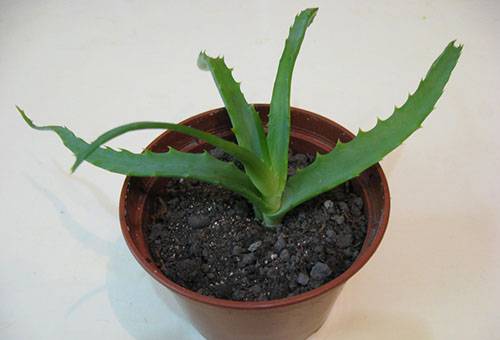
How aloe reproduces
So you've decided to grow aloe in your home. This plant reproduces in four main ways.
- Bifurcation of the trunk.
This reproduction of a flower usually occurs when it is transplanted. Aloe has a very powerful and spreading root system. Therefore, once a year, the flower must be transplanted into larger pots. When a plant grows in one pot for a long time, its trunk can bifurcate (tree-like aloe). When transplanting, the two trunks are carefully separated and planted in different pots. - Shoots.
Also, when transplanting, you can find basal processes near the roots. They are not as strong and powerful as forked trunks, but they are quite suitable for breeding. Usually, the root shoots already have their own root systems and can be immediately planted in new soil. - Cuttings.
If the plant from which you want to grow a new aloe does not root and bifurcate, it can be propagated by cuttings. For this, the top of the plant or its large leaf is cut off. Aloe can take root in two ways. First, dip the cut part into water and after a week you will notice that it is covered with small roots. The second way - you can leave the cut part without water so that the cut dries slightly. After that, the shoot is planted in the ground. Oddly enough, it is well received.
Another way to breed aloe is through seeds. They are rarely used, because even without seeds, aloe multiplies well, is well accepted in any soil. If you want to grow aloe from seed, buy it from a florist shop and grow it under an ultraviolet lamp. This is a prerequisite for germination of sprouts.
how to properly care for a cactus
Signs of improper procedure
The plant suddenly began to change color, the leaves darken and become yellow or brown, shrink - this picture should alert the grower. It is easy to understand that the irrigation mode is selected incorrectly:
- With excessive watering, the leaves turn yellow, watery, and easily fall off.
- Small leaves with enlarged serrations, thinning old leaves - watering is too poor.
- An unpleasant odor from the soil, molds on it - waterlogging, threatening the death of the plant, or improper watering from above.
- Blackened tips of foliage - probably roots rotting from excess moisture require transplanting.
- Breaking stems, the trunk falling to the side, its breakage near the base - it was probably watered abundantly, often from above, which caused rotting of the root collar and weakening of the layers.
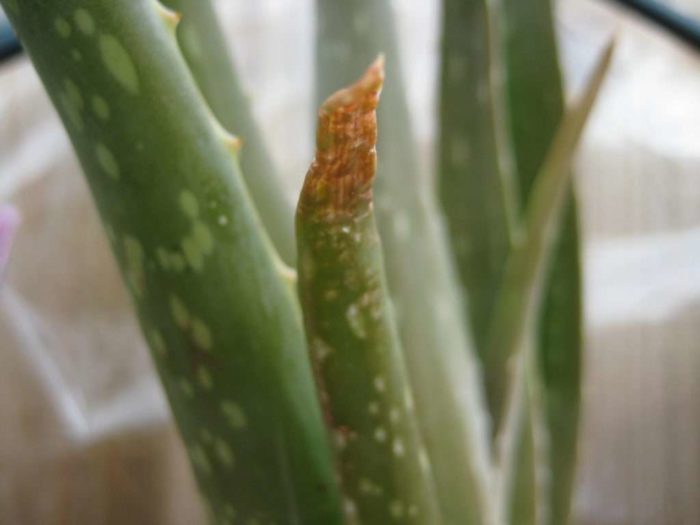

By carefully observing the green friend, you can always understand what caused his changes.It is important to normalize the situation in time so as not to destroy the plant, to choose the correct temperature regime and the order of watering. Then the aloe will delight the eye, it can always be used as an ambulance for various diseases and for cosmetic procedures.
5 / 5 ( 1 vote)
How to plant aloe
You have already found the piece of aloe that you want to plant. A small pot is needed for the plant. You should not immediately buy a large-capacity pot - it is better to replant it once a year.
The bottom of the pot must be lined with drainage. These can be expanded clay pebbles or brick cuttings. The soil is prepared from three components - five parts of garden soil, one part of peat and two parts of sand. You can buy a ready-made mixture for different plants in specialized stores. In the prepared soil, you need to plant a cutting so that the soil covers the entire aloe root.
If you are replanting a plant from a smaller pot to a larger container, you need to carefully separate the soil and roots from the sides of the pot with a knife and repot it to a new location. The space between the walls of the new pot and the roots is filled with soil.
Useful video
We offer you to watch a video about the tree aloe plant:
We suggest you read other useful articles about the agave:
- Breeding methods for the agave at home.
- Features of flowering agave.
- Agave recipes.
How to care for aloe
Aloe is a fairly unpretentious plant that grows well even among novice flower growers. Aloe blooms rarely at home, but sometimes it happens. Aloe flowers can be yellow, red, or orange. They are quite large and unusual.
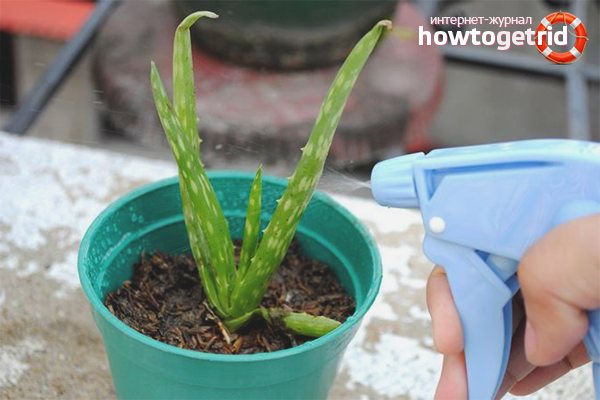

In order for a flower to grow beautiful, lush and large, you need to follow several rules for its care.
- Location.
Aloe grows well in the shade - no need to think about artificial lighting in winter. However, it feels best in the sun. Leave the pot of aloe on the sunny side of the house to grow well. During the hot summer months, do not leave the plant in direct sunlight all day. Better to leave it where the sun will touch it in the morning or evening. In the warm season, aloe can be exposed to fresh air - a balcony or loggia. This allows the plant to get saturated with oxygen and get a kind of hardening. If you notice that the aloe leaves have become lethargic and began to curl, this means that the plant does not have enough sunlight. Provide the flower with sun baths and it will come to its senses. And don't leave the plant in a draft - it doesn't like that. - Temperature.
Aloe does not react strongly to temperature changes. In winter, the thermometer should not drop below 15-10 degrees Celsius. In summer, the optimum temperature for a flower is 25 degrees. Since aloe is native to Africa, the flower can withstand very high temperatures - over 40 degrees. - Watering.
The plant does not like a lot of moisture, so watering the aloe is often not worth it. In the spring and summer, you need to water the plant more often, 2-3 times a week. But in winter, when the plant slows down its growth, it is necessary to water the flower only when the soil becomes dry. Excessive moisture can lead to root rot and death of the plant. Watering is carried out with settled water at room temperature. Do not water the plant with cold or hot water. In summer, when the air gets dry, aloe needs regular spraying. You can also gently wipe the leaves with a damp cloth to wipe off the dust. - Fertilizer.
In order for the flower to grow and bloom well, it must be fed during the active phases of the year. For this, in spring and summer, the flower is fertilized. In a shop for florists, you can buy mineral fertilizers designed for cacti or complex fertilizing suitable for any flowers.
how to care for an orchid at home
Air temperature
With the arrival of summer, as a rule, plants do not need special care.At this time, as already mentioned, it is best to keep succulents on a loggia or balcony, where there is a sufficient amount of fresh air. However, more attention and care should be paid to the flower with the arrival of winter.
In winter, the plant should be kept at an air temperature of about 12 degrees. To do this, aloe vera is removed in a bright, cool room. It should be noted that it is strictly forbidden to place a flower near heating devices in winter, since such a place is detrimental to the plant.
Plant diseases and pests
Like a person, aloe grows poorly and does not develop if it lacks something or, on the contrary, something interferes. Let's try to figure out the main problems faced by aloe.
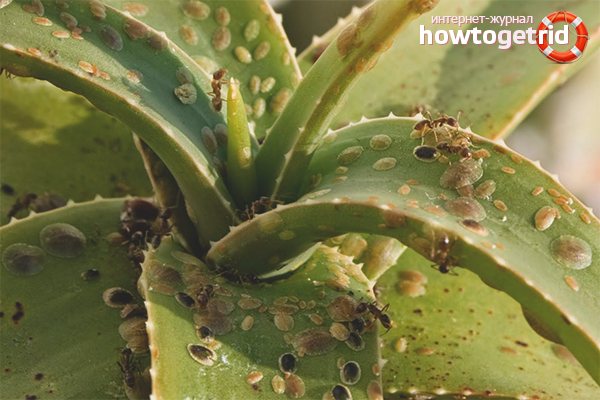

- If the leaves become lethargic and pale, then you are watering the flower too much. Reduce the amount and intensity of watering and the plant will return to normal.
- If the leaves of aloe become reddish and wrinkled, then the sun is baking too much. Do not leave the plant in direct sunlight - leave it in the shade for a while, or expose it only in the morning or evening when the sun is not so aggressive.
- Sometimes the edges of the aloe leaves turn yellow or dry. Many people think that this is how a lack of moisture is manifested. But this is not the case. Thus, the plant reacts to poor water quality, or rather, to a large amount of chlorine in it. Set aside the water or pass it through a filter to revive the aloe.
- If the aloe does not grow, then the soil is not fertile enough. Very often the plant stops growing and developing if the soil is too clayey and does not conduct oxygen. Transplant the flower to try and save it.
- If the roots of the aloe are rotten, it means that the plant is sick with root rot. This is due to over-watering. Also, the roots begin to rot if you water the flower with cold water. In this case, the flower should be dug up and the healthy parts of the roots should be carefully separated from the rotten ones. Change the soil completely and plant the healthy part of the plant in new soil. If the root has rotted completely, all that remains is to cut off the stem, put it in water and hope that it will give new roots.
- Aloe has pests that give the plant a lot of trouble. The mealybug is a fairly large insect that can be removed by hand or with tweezers. If you notice such an uninvited guest, treat the leaves with garlic tincture with alcohol or special insecticides. Spraying the plant with cold water will help against spider mites.
how to get rid of spider mites on indoor plants
Transfer
The transplant is carried out in the spring. Young plants are transplanted annually, old ones every 2-3 years.
Preparing the pots
The best pot for growing aloe is clay. Recently common plastic pots do not meet the conditions in which the plant should be. Plastic does not allow air to pass through, and this quality is the most important condition for the life of the aloe root system. Aloe must be transplanted into a plastic clay pot. The transplant period is the beginning of spring, after a period of winter dormancy.
The day before transplanting, the plant is watered abundantly, so that later it will be easier to remove the root system. It is better to perform this operation on a cool, cloudy day. In no case should you transplant the plant in hot weather. Or do it in the evening.
A new clay pot must be kept in water for some time so that the clay absorbs water, otherwise the pot after transplanting the plant into it will “take away” most of the moisture, which can have a very adverse effect on the growth and further development of aloe. Superphosphate must be added to the water, it neutralizes the lime on its walls.
An old clay pot must be treated before use in case it contains microspores of harmful bacteria. To do this, it is dipped in a 2% solution of copper sulfate. You can also heat the pot in an oven or oven.
Preparing the soil for aloe
The growth of the plant depends on the quality of the soil, its appearance, a well-groomed plant will have great healing properties, which is sick and frail. The soil should consist of several parts of different types: turf, leaf, humus and others. Aloe is an inhabitant of deserts, therefore, a prerequisite for the soil for it is clean river sand, as well as clay.
- turf soil - 3 parts
- humus soil - 2 h
- leafy soil - 1 h
- clay soil - 1 h
- river sand - 1 h
Stir the mixture thoroughly. You can add charcoal - it has antibacterial properties.
For drainage, clay shards are used and one of them is convex in shape. It is possible to use medium-sized pebbles. The material is placed on the bottom of a clay pot just above the hole in the center with the convex side up. A few more shards are placed on top and covered with the prepared soil mixture to half.
Carefully dig up the aloe, trying not to damage the roots, transplant it into a prepared pot with soil and sprinkle with the rest on top.
When transplanting is carried out solely because of replacing the pot with a more suitable one, it is not necessary to shake off the soil from the roots, it is enough to carry out "transshipment" - that is, replanting with partial preservation of the old soil.
In the case when the transplant is carried out in order to improve the conditions of the diseased plant, the remnants of the old soil are removed from the roots, diseased roots are cut off, and the sections are powdered with crushed wood ash.
The juice of aloe itself increases the germination of seeds, the growth of cuttings. Therefore, you can add a few drops of juice made from large fleshy leaves to the water for irrigation.
The benefits of aloe
If you have aloe at home, it means that you have not only a beautiful flower on your windowsill, but also a first aid kit and even a cosmetic bag. But only an adult plant that is at least three years old can be beneficial. Let's take a look at the most popular aloe uses.
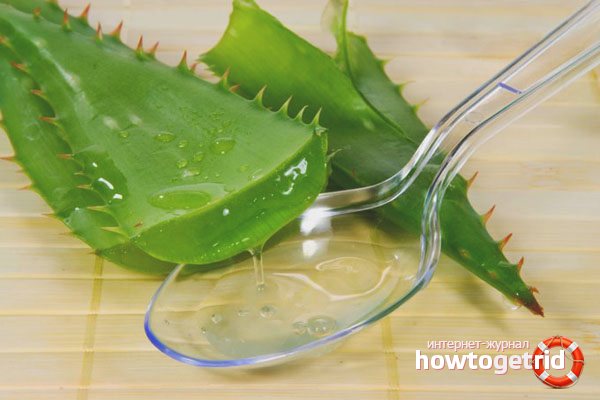

- Aloe has a pronounced antibacterial effect, due to which it is used in the treatment of ENT diseases. Aloe juice is successfully instilled into the nose for the treatment of a runny nose, with diluted juice gargle with sore throat, laryngitis and tonsillitis.
- This plant perfectly heals open wounds, draws out pus and disinfects infected skin areas.
- Aloe is widely used in cosmetology. With the help of the juice of its leaves, you can cleanse the skin of acne, blackheads and boils. Aloe has been successfully used to combat dandruff and seborrhea.
- This plant can provide anti-burn therapy as a first aid. In the event of a burn, apply a lengthwise cut sheet to the affected skin area so that the cut area covers the wound. This will relieve some of the pain and speed up wound healing.
- Aloe has been successfully used in the treatment of eye diseases. Purified and diluted aloe juice is instilled into the eyes with conjunctivitis, blepharitis, keratitis and clouding of the lens.
- The decoction of the plant is drunk for various diseases of the digestive tract. If you drink it on an empty stomach, the plant promotes the healing of ulcers, soothes the inflamed gastric mucosa with gastritis, and improves bowel function.
Aloe is a useful plant in every way. It does not require special care and any separate conditions for life. A few simple rules will help you grow a beautiful decorative flower on the window that will delight you in summer and winter.
how to organize watering indoor flowers while on vacation
Fertilization
During the period of active growth, which lasts from April to September, aloe vera needs additional feeding, which is carried out once every 2 weeks. For this, special fertilizers are used for cacti. You can also use special liquid mineral complexes. During this procedure, it is necessary to ensure that the fertilizing does not fall on the surface of the leaf plates and on the stems.
It should be noted that only adult plants are fed. If the crop is damaged, it must be cured before fertilization. Young specimens do not need feeding. Also, you should not feed plants, after transplanting which has passed less than six months.
Top dressing is applied to well-moistened soil. Fertilization in dry soil is not allowed, as the plant can be severely affected by this.
If aloe vera grows in a special soil mixture, then it does not need to be fed. But if a newly purchased flower grows in a simple soil, then the first feeding is applied no earlier than 2-4 weeks after purchase. After transplantation, aloe is fertilized only after the first shoots appear.
Watering rules
How to water aloe? There are two methods:
- Upper. In this case, the earth is moistened from the watering can.
- Lower. The liquid is poured into a tray or a pot is placed in a container with water for a few minutes.
How to water aloe if the plant is young? It is advisable to choose the lower method. This is especially suitable if the water needs to be slightly warmed up before watering. This method will prevent nutrient components from leaching out of the soil and its excessive moisture.
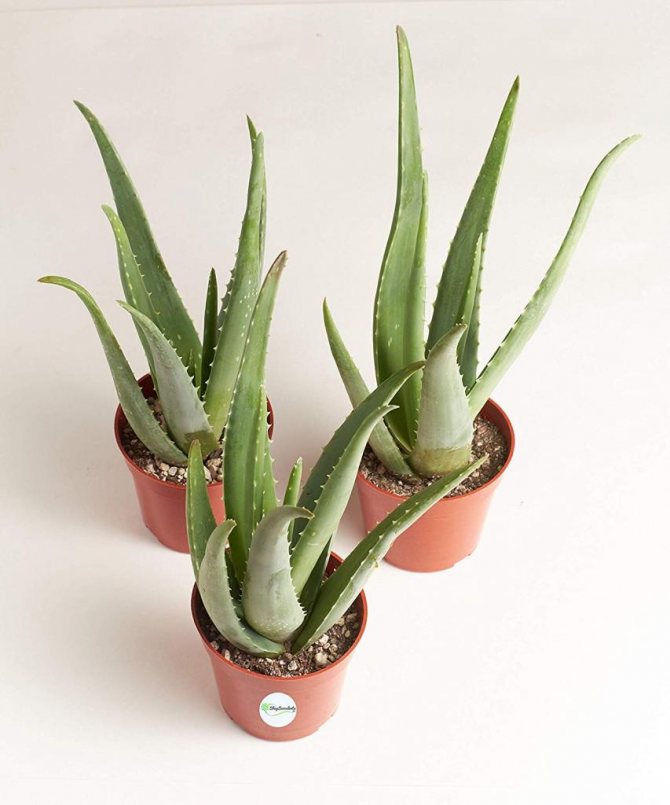

And how to water an adult aloe? The upper method is more suitable. Water it carefully, from a watering can with a narrow spout and under the root, so as not to wet the leaves. It is necessary to control so that the soil in the irrigation area is not washed out. To do this, before watering, it is advisable to loosen the soil in the pot a little.
Thirty minutes after watering, check for excess water in the pan. When they accumulate, they must be poured out in order to prevent acidification and decay of the root system. It is better to water in the early evening, after a decrease in solar activity.
What kind of soil is needed
Aloe care in this regard requires careful attention. This also includes preparing the correct ground. Most experts in this case recommend giving preference to slightly acidic soil compositions. This ideal soil for aloe consists of turf and leafy soil, humus and river coarse sand. Also, don't forget about drainage. In this case, you can use ordinary broken stones. And if a transplant is made, then before this procedure it is necessary to cleanse the roots of aloe from the old earth and process them with charcoal.
In which organs does the flower store moisture?
Watering frequency and water quality are important to aloe. Water serves as a building material for its tissues. Absorbed from the soil by the roots, moisture rises up the stem to the leaves and carries the nutrients necessary for the normal development of the plant.
Aloe has a thick stem and fleshy leaves. Aloe belongs to succulents, which have the ability to store water in the organs.... Using these reserves, the plant is able to survive in the complete absence of external sources of moisture.
Suitable liquid
What water to water aloe with? For him, you cannot choose tap water, which was collected before this procedure. It contains a lot of chlorine and alkaline impurities that negatively affect the health of the plant. Therefore, water that has been separated for at least a day is needed. During this period, most of the chlorine will evaporate.
Soft water required. If it is tough, then it is boiled and then defended. To normalize the acid-base ratio, acetic or citric acid is used in an amount of 3-5 g per liter of water.
The water is also softened by freezing.For this, tap liquid must be drawn into a container and allowed to stand for 12-24 hours. Then it is poured into plastic bottles so that the sediment that appears in the container does not penetrate into them. Place the bottles in the freezer where the water should freeze completely. Then they are taken out and left until it melts. After that, it is suitable for watering.
The temperature of the liquid is important. In the heat, it should be at least 30 degrees, in the spring - 20-25 degrees. In winter and autumn, you need to water with water, the temperature of which is 8-10 degrees higher than in the room.
Watering frequency
Does aloe store water in its leaves? Since the plant is native to the desert islands of Barbados, Curacao, the west of the Arabian Peninsula, aloe is able to store moisture in the fleshy leaves and stem. Therefore, it tolerates prolonged drought. Watering aloe is infrequent.
For many other plants, the procedure should be performed on dry soil. But you should not rush with aloe. First, you need to loosen the upper part of the earth, check that it has dried out by 4-5 cm. Only then can you water it without flooding. It is important that the liquid flows out of the pot and into the sump.
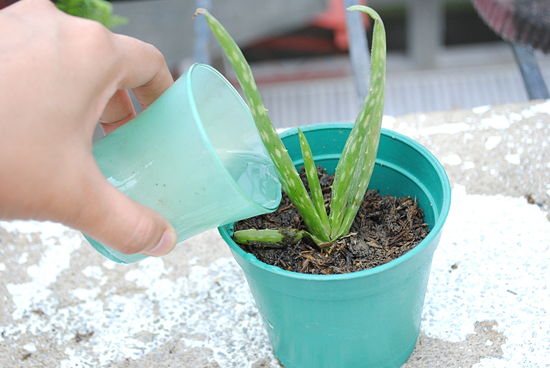

From the second half of spring to October 15, watering should be done once every ten days. In the cool period, the frequency of watering aloe should be reduced, the soil should be moistened only when the soil dries to the bottom of the pot. A young plant needs more frequent watering than a mature plant.
The constant lack of moisture also negatively affects the flower. It should be borne in mind that the frequency of watering is related to the intensity of light, humidity, size, and root density. In a small pot, the soil dries faster.
What does the agave like?
Some gardeners stimulate the flowering of Aloe. For this, it is necessary to create ideal conditions, namely:
- the air temperature must be kept at about 14 ° C. Since the plant in extreme conditions tries to multiply, starting to bloom;
- the air must be dry so that the roots do not start to rot;
- for irrigation, only a sump is used, into which water is added for 10 minutes, and then must be drained.
Reference. Aloe blooms for six months. For more abundant flowering, it is necessary to add minerals twice a month. In this case, the soil must be pre-moistened.
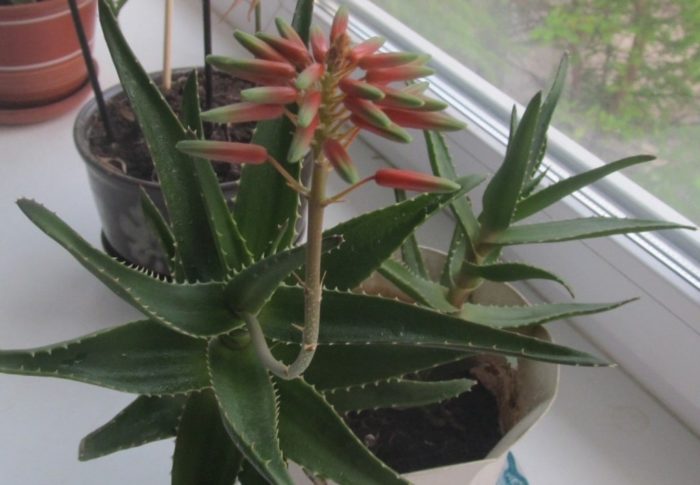

Common growing questions
- Which pot is best for aloe - plastic or ceramic? It is best to opt for a ceramic pot with drainage holes as it is sturdier.
- Do all varieties of aloe bloom? All varieties of aloe bloom differently, but very rarely.
- How to make a plant bloom? To do this, during the dormant period, reduce the temperature in the room to 14 degrees, reduce the number of waterings and carry them through the pallet, put the pot in partial shade. Chemical stimulants can also be used.
- Why do aloe leaves burst if watering is poor? This is caused by heavy metals in the running water. You need to filter the water or use already purified water.
Aloe is an ornamental houseplant that has medicinal properties. The flower is unpretentious to care for and endures changes in environmental conditions. But in order for it to please the eye and, perhaps, sooner or later bloom, it needs to be paid attention.
General information
A detailed description of aloe will allow you to familiarize yourself with its features. The genus of aloe has about 500 species. Among them there are perennial, herbaceous, shrub varieties. Most of them are succulents.
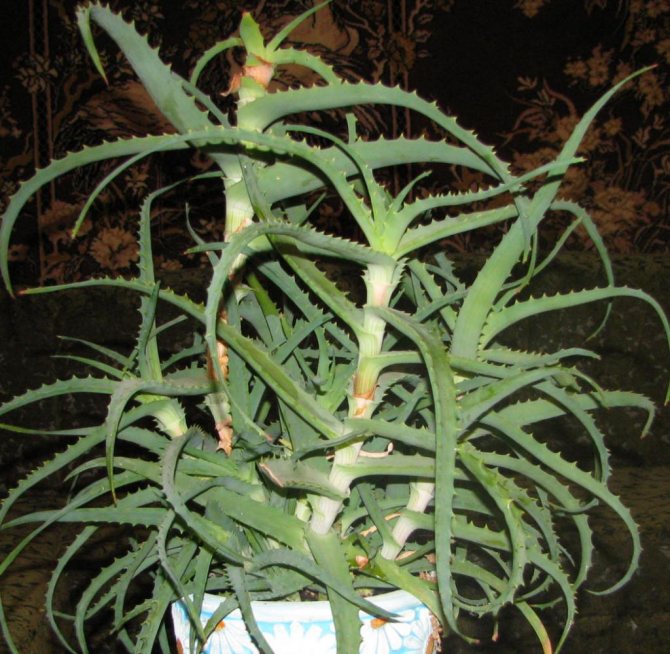

A succulent plant is a plant that can be without water for a long time, since the moisture supply is in the tissues. It has firm, fleshy leaves, a short trunk or stem. Therefore, aloe grows in dry and hot climates. For example, in Africa and the Arabian Peninsula.
Reproduction
This is another important step in how to care for indoor aloe. As a rule, such procedures are performed simultaneously with plant transplantation. The easiest way to get a new flower is from an aloe leaf. To do this, during the transplant process, you need to cut off several mature leaves, on which rather hard thorns have already formed. After that, they are left to dry for a while. In the next step, the leaf plates are planted directly into the ground. The land must also be prepared.
In this case, it is necessary to mix leafy earth, sand and slightly moisten the soil. After that, the future sprout in the pot must be placed in a fairly bright place, where the temperature is 15-18 degrees Celsius. It is worth being patient, since the first root of a young seedling does not appear quickly. This does not mean that you need to start zealous and water the plant every day. This is completely normal, so you just need to wait a little longer.
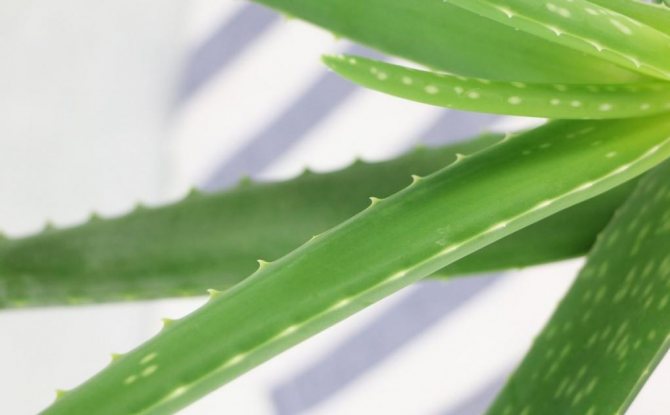

If such a young plant is well looked after, fed and monitored for its health, then after three to four years flowers will begin to appear on it. Aloe vera (how to care for it, described in the article) is really capable of blooming. Few people know about this. However, aloe pampers with its beautiful inflorescences only those flower growers who are most fortunate.

